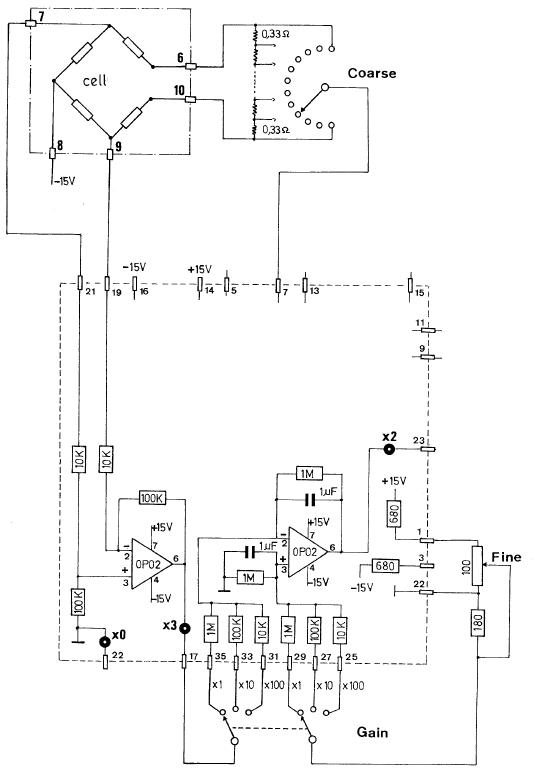Hello,
In an "old" design made in 1987 (this design is still used and if correclty set, works well), a Wheatstone bridge is used as a measurement cell (a current source supplies the cell by the pin 7 of the board) with a first amplifier with a gain of -10 and the second is used with a manual selector to set the gain between -1 to -100, giving a global gain from 10 to 1000. We measure the output voltage on the point x2. I consider that my level in analog is quite poor (I'm more involved in microcontrollers programming... sorry) but I hope that my understanding is correct for the moment.
I'm thinking (maybe I'm wrong) that using an unique programmable gain instrumentation amplifier (as PGA202 or another) should make the job of the two OP02 (if we do not pay attention to the filter on the second OP02) and maybe better because the common mode rejection would be better with the PGA202 than using the OP02 with all resistors (now we can achieve a noise of 20µVpeak-to-peak with the global gain of 10 on X2). I'm also thinking that the global gain of the design will be more "repeatable" with the PGA than using 2xOP02 + resistors.
Can you confirm that this idea is correct or not (with simple explanations, please) ? I would like to make other changes but I would prefer to do it step by step if it's possible. I hope that I do not forget to provide all needed information.
Best regards,


